Address
304 North Cardinal
St. Dorchester Center, MA 02124
Work Hours
Monday to Friday: 7AM - 7PM
Weekend: 10AM - 5PM
Address
304 North Cardinal
St. Dorchester Center, MA 02124
Work Hours
Monday to Friday: 7AM - 7PM
Weekend: 10AM - 5PM
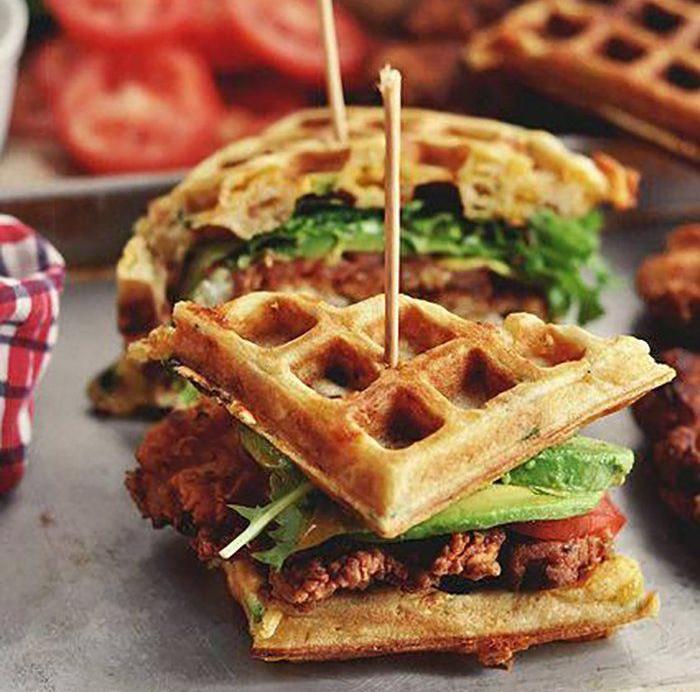
Ah, the waffle—those golden, crispy squares with their pockets of air perfect for holding a generous dollop of whipped cream or a drizzle of maple syrup. While Belgian waffle makers are renowned for their classic and superior results, there’s a whole world of non-Belgian waffle makers out there, each with its unique charm and functionalities. Whether you’re a seasoned waffle enthusiast or a curious beginner, diving into the realm of non-Belgian waffle makers can open up a world of delightful possibilities. Let’s explore why these machines are worth considering and how they can elevate your morning routine—or any time of the day—into a delightful culinary experience.
In the vast world of kitchen gadgets, the waffle maker has long been a staple for creating those delicious, golden-brown treats. But not all waffle makers are created equal, and the realm of non-Belgian waffle makers is a treasure trove of unique styles and functionalities. Let’s dive into this delightful domain and explore the myriad options that cater to different tastes and preferences.
Waffle makers come in various shapes and sizes, each designed to cater to specific waffle styles. Whether you’re a fan of the classic Belgian waffle with its deep pockets and fluffy texture, or you’re looking for something lighter and more compact, non-Belgian waffle makers offer a diverse array of choices. From the sleek and modern to the nostalgic and whimsical, these devices are as varied as the waffles they produce.
One of the standout features of non-Belgian waffle makers is their versatility. Unlike their Belgian counterparts, which are designed to make large, deep-pocketed waffles, non-Belgian waffle makers often come in smaller, more portable sizes. This makes them perfect for individuals, couples, or even those who live in smaller spaces. Whether you’re hosting a intimate gathering or just want to enjoy a quick breakfast on the go, these compact waffle makers can be a game-changer.
The variety in non-Belgian waffle makers is quite remarkable. You’ll find models that promise a crispy exterior with a soft, chewy interior, while others are designed to create a perfectly round, thin waffle that’s ideal for sandwiches or sweet toppings. Some even come with interchangeable plates, allowing you to switch from classic squares to Belgian-style waffles or even heart-shaped waffles for a special occasion.
When it comes to features, non-Belgian waffle makers are no less impressive. Many models include non-stick surfaces that make cleaning a breeze, while others come with adjustable temperature controls to ensure your waffles are cooked to perfection every time. Some even have built-in timers and automatic shut-offs for safety and convenience.
Brand diversity is another hallmark of the non-Belgian waffle maker market. From well-known household names to niche brands, there’s a waffle maker out there for everyone. Each brand brings its own twist on design and functionality, ensuring that you’ll find something that resonates with your personal style and needs.
For those who are health-conscious, non-Belgian waffle makers can be a great addition to the kitchen. Many models are designed to cook waffles with less oil, allowing you to enjoy your favorite breakfast treat without the guilt. Plus, with the plethora of toppings available, you can customize your waffles to suit your dietary preferences, whether that’s a vegan spread or a rich, buttery topping.
In terms of ease of use, non-Belgian waffle makers are generally straightforward. Most come with clear instructions and intuitive interfaces, making them perfect for those who are new to waffle-making or simply want a device that’s easy to operate. The cooking process is also quite simple—load the batter, wait for the indicator light, and enjoy your freshly cooked waffle.
While non-Belgian waffle makers may not have the storied history of their Belgian counterparts, they certainly hold their own in terms of quality and innovation. They offer a fantastic alternative for those who love waffles but may not have the space or desire for a larger, more traditional Belgian waffle maker.
In conclusion, the world of non-Belgian waffle makers is a vibrant and varied one, with something to suit every taste and lifestyle. Whether you’re a seasoned waffle enthusiast or just dipping your toes into the waffle-making waters, these devices are sure to enhance your breakfast routine. So why not explore the options and find the perfect non-Belgian waffle maker to add a touch of joy to your morning meal?

Non-Belgian waffle makers have gained popularity in recent years, and for good reason. While Belgian waffles are a classic, there are numerous advantages to opting for a non-Belgian model. Here’s a closer look at why these waffle makers might be the perfect choice for your kitchen.
One of the most immediate benefits of a non-Belgian waffle maker is the variety of styles and designs available. Unlike the traditional Belgian waffle, which is known for its large, deep pockets, non-Belgian waffle makers come in a range of shapes and sizes. Whether you prefer the classic square waffle, the smaller Belgian-style waffle, or even a heart or star-shaped waffle, there’s a non-Belgian waffle maker out there that can cater to your taste.
Another advantage is the versatility they offer. Non-Belgian waffle makers are not just limited to making waffles. Many models can also bake mini pancakes, cornbread, and even cookies. This dual-purpose functionality means you’re getting more for your money and can enjoy a variety of baked goods with a single appliance.
Ease of use is a key factor that often favors non-Belgian waffle makers. These appliances typically come with simpler controls and a straightforward cooking process. They often have non-stick surfaces that make cleaning a breeze, which is a significant plus for those who want to minimize the time spent on kitchen cleanup after a meal.
Price is often a major consideration when shopping for a waffle maker. Non-Belgian waffle makers tend to be more budget-friendly compared to their Belgian counterparts. This affordability makes them an excellent choice for those who want to enjoy the joy of waffles without breaking the bank.
The cooking time is another area where non-Belgian waffle makers shine. They often cook waffles much faster than Belgian waffle makers, which can be a game-changer for busy mornings or when you’re craving a warm, fresh waffle in a hurry.
The size of the waffles is also a point to consider. Non-Belgian waffle makers often produce smaller waffles, which can be a better fit for individual servings or when you’re looking to serve a crowd with smaller portions. This can be particularly appealing in settings like schools, hospitals, or even at potluck gatherings.
The taste and texture of the waffles can vary depending on the waffle maker. While some non-Belgian waffle makers can produce a rich, fluffy texture that is similar to a Belgian waffle, others might offer a different texture that suits different preferences. If you’re not a fan of the deep pockets of a Belgian waffle, a non-Belgian model might provide a more even distribution of batter, resulting in a more uniform waffle.
Customization is also an aspect that non-Belgian waffle makers can offer. Many models come with adjustable browning settings, allowing you to control the crispness of your waffles. Additionally, some waffle makers have removable plates, which makes it easier to add fillings or toppings before cooking, or to create unique shapes with the batter.
Safety features are another consideration. Non-Belgian waffle makers often include features like automatic shut-off, which can prevent overcooking and potential burns. These safety features are a crucial aspect for those with young children or for anyone who wants to ensure their kitchen appliances are as safe as possible.
Lastly, the portability of non-Belgian waffle makers cannot be overlooked. Many models are lightweight and come with a handle or a carrying case, making them perfect for taking on road trips, camping, or even to a friend’s house for a casual get-together.
In summary, the choice between a Belgian and a non-Belgian waffle maker is a matter of personal preference and the specific needs of your kitchen. Non-Belgian waffle makers offer a host of benefits, from variety and affordability to ease of use and safety features, making them a compelling option for anyone looking to add a waffle maker to their collection.
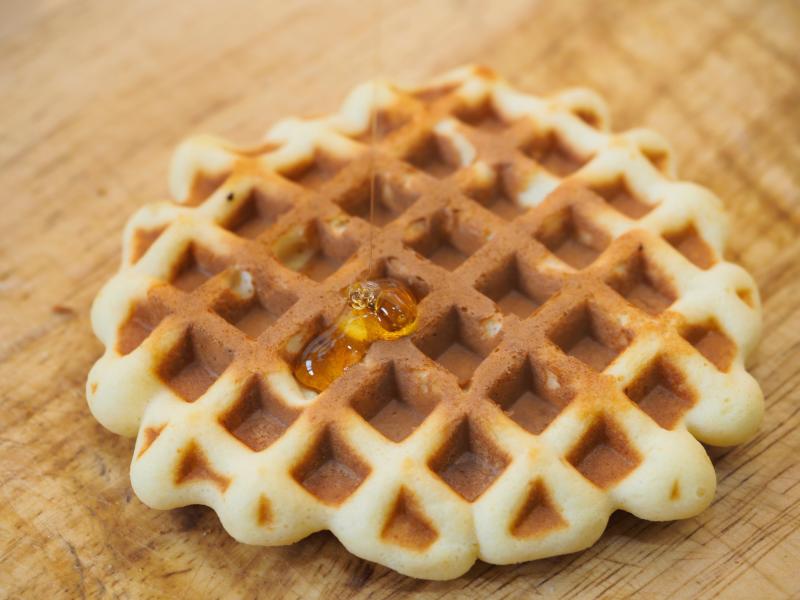
When shopping for a non-Belgian waffle maker, it’s important to consider a variety of features that will enhance your waffle-making experience. Here are some top features to look for:
Size and Capacity: Consider how many waffles you plan to make at once. Some non-Belgian waffle makers are designed for a single waffle, while others can accommodate two or even three. Larger machines are great for families or those who love to entertain, but they might take up more counter space.
Even Heating: The ability to produce waffles with even, consistent browning is crucial. Look for waffle makers with even heat distribution to ensure that every corner of your waffle is cooked to perfection.
Non-Stick Coating: This feature is a game-changer for easy release and effortless cleanup. A good non-stick surface means you won’t have to scrape or struggle to remove stuck-on batter from your waffle maker.
Adjustable Temperature Settings: Not all waffles are made to the same crispness level. Having a range of temperature settings allows you to adjust the cooking time and temperature to your personal preference, whether you like your waffles soft and fluffy or extra crispy.
Removable Plates: For easier cleaning and storage, look for waffle makers with removable plates. This feature not only makes cleaning simpler but also allows for quick and convenient storage, especially if you’re short on cabinet space.
Indicator Lights: A simple indicator light can tell you when the waffle maker is preheated and ready to cook. This is a small but very useful feature that prevents overcooking or burning your waffles.
Durable Build: A sturdy build is important for the longevity of your waffle maker. Look for models made with high-quality materials that can withstand regular use and won’t bend or warp over time.
Cord Storage: A waffle maker with a cord storage feature keeps your kitchen looking tidy by neatly tucking away the power cord when it’s not in use.
Safety Features: Check for safety features such as cool-touch handles, which prevent accidental burns, and a shut-off feature that automatically turns off the waffle maker after a certain period of non-use.
Additional Functions: Some non-Belgian waffle makers come with extra functions, such as reversible plates for both Belgian and regular waffles, or the ability to make pancakes and other breakfast treats. These added features can provide versatility and convenience, depending on your needs.
Easy Locking Mechanism: A secure locking mechanism ensures that the plates stay closed while the waffle is cooking, preventing any batter from escaping and reducing the risk of a mess.
Design and Style: Lastly, consider the design and style of the waffle maker. It should complement the rest of your kitchenware and be a pleasure to look at, especially since it’s a kitchen appliance that you’ll see often.
Remember, the best waffle maker for you will depend on your individual needs, whether that’s the ability to make a large batch of waffles for a crowd or the convenience of a compact, single-serve model. Take the time to explore these features and read reviews to find the non-Belgian waffle maker that fits your lifestyle and preferences perfectly.
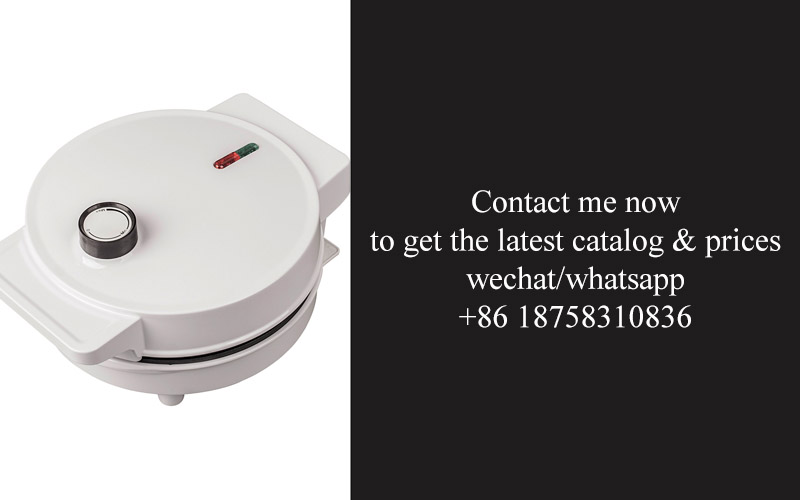
When it comes to non-Belgian waffle makers, the market is brimming with a variety of brands and models, each offering unique features and benefits. Here’s a rundown of some of the most popular brands and models that have won the hearts of waffle enthusiasts worldwide.
The Hamilton Beach 25401 is a go-to choice for many due to its affordability and versatility. It’s known for its adjustable browning settings and removable drip tray, making it easy to clean. The compact size also makes it a great pick for small kitchens or for those who prefer a waffle maker that doesn’t take up too much counter space.
The Belkin Conair WafflePro Plus is another favorite, especially for its innovative flip design. This feature ensures even cooking on both sides of the waffle, reducing the need to flip it manually. The non-stick surfaces make for easy release and effortless cleanup, and the machine also boasts a convenient “ready” indicator light.
The Cuisinart WAF-150 is celebrated for its sturdy construction and user-friendly controls. It comes with a digital timer, allowing you to set the exact amount of time for the perfect waffle, and its deep grid design is perfect for thick, hearty waffles. The non-stick surfaces and removable plates make it a breeze to clean, too.
The Breville Die-Cast Waffle Maker is a high-end option that doesn’t compromise on quality. The die-cast build ensures durability, and the non-stick surfaces provide a seamless waffle-making experience. It features a digital timer with a “ready” indicator and a temperature control function for precision cooking. The adjustable browning control gives you the freedom to customize your waffle’s crispness.
For those who love to entertain, the Breville 2-Slice Belgian Waffle Maker is a great choice. It can cook two waffles at once, making it perfect for hosting or family breakfasts. The Belgian-style grids are larger, which means you can make bigger, heartier waffles with more surface area. The non-stick surfaces and removable grids are also a huge plus for easy cleanup.
In the realm of electric waffle makers, the George Foreman GWM1000 is a standout for its unique approach. This countertop grill doubles as a waffle maker, allowing you to enjoy the flavor and convenience of grilled food while also creating delicious waffles. The adjustable browning control and the easy-to-clean surfaces make it a versatile kitchen gadget.
The Chef’sChoice 837W WafflePro Express is a sleek and modern choice, offering a host of features. The adjustable browning control, non-stick surfaces, and a built-in indicator light are all standard, but what sets this model apart is its programmable settings, allowing you to tailor your waffle-making experience to your preference.
For those looking for a high-tech waffle maker, the Krups WMF100D is a fantastic option. This model boasts a digital interface with a countdown timer and an audible beep when the waffles are done. The non-stick plates and adjustable browning control are accompanied by a drip tray for easy cleanup.
In the realm of manual waffle makers, the Nordic Ware Belgian Waffle Iron is a classic that has stood the test of time. While it requires some manual effort to press down the handle, it offers the authentic Belgian waffle experience. The cast-iron construction is not only durable but also heats evenly, ensuring consistent results with each use.
The All-Clad Waffler is another manual option that’s a favorite among chefs and home cooks alike. It’s made from high-quality stainless steel, which conducts heat beautifully, and the deep wells are perfect for making those classic Belgian waffles with the crispy edges and soft, chewy centers.
The Cuisinart Belgian Waffle Maker is a great budget-friendly choice that doesn’t skimp on quality. The non-stick surfaces make for easy release, and the deep grids are ideal for making waffles with lots of syrup-soaking pockets. The adjustable browning control and the removable plates make cleanup a cinch.
Finally, the Proctor-Silex Belgian Waffle Maker is a straightforward and no-frills option that’s great for those who prefer simplicity. It doesn’t have all the bells and whistles of other models, but it gets the job done with reliable performance and ease of use.
Each of these brands and models has its own strengths and weaknesses, making them suitable for different preferences and needs. Whether you’re a fan of Belgian-style waffles, looking for a high-tech appliance, or simply want something that’s easy to clean, there’s a non-Belgian waffle maker out there that’s perfect for you.
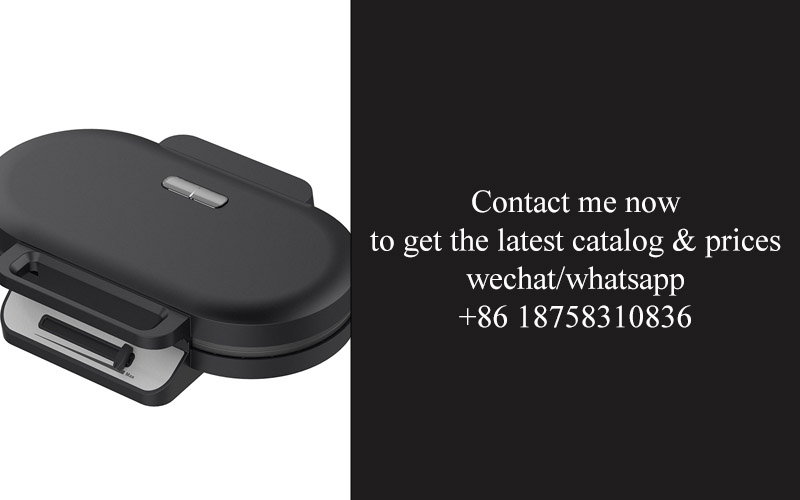
When it comes to using your non-Belgian waffle maker, the process is quite straightforward, but there are a few key steps to ensure the perfect waffle every time. Here’s a detailed guide to help you master the art of waffle-making:
Preparation is Key: Before you start, make sure your waffle maker is clean and unplugged. If it’s your first time using it, read through the user manual to familiarize yourself with any specific features or safety precautions.
Grease the Plates: Many non-Belgian waffle makers come with non-stick surfaces, but it’s still a good idea to lightly grease the plates to prevent sticking. You can use a non-stick cooking spray, butter, or cooking oil. Be sure to apply a thin, even coat.
Mix the Batter: Depending on your preference, you can use a store-bought waffle mix or make your own from scratch. If you’re making your own, combine the dry ingredients in one bowl and the wet ingredients in another. Gradually mix the wet ingredients into the dry until you have a smooth batter. Be careful not to overmix, as this can make your waffles tough.
Heat the Waffle Maker: Plug in your waffle maker and heat it according to the manufacturer’s instructions. Most waffle makers have an indicator light that tells you when it’s ready. If you’re using a model with a temperature setting, adjust it to the desired level.
Pour the Batter: Open the waffle maker and pour the batter onto the center of one of the plates. The amount of batter you use will depend on the size of your waffle maker. A general rule of thumb is to fill the plate about 2⁄3 full.
Close and Cook: Once the batter is in place, close the lid of the waffle maker. The cooking time can vary depending on the model, but it’s usually between 3 to 5 minutes. You’ll know it’s done when the waffle maker beeps or the indicator light turns off.
Check for Doneness: Lift the lid and check the edges of the waffle. If they’re golden brown and crispy, your waffle is ready. If they’re still pale, give it a few more minutes.
Remove the Waffle: Use a spatula to carefully remove the waffle from the waffle maker. Be gentle, as the waffle can be delicate when it’s hot. Place it on a wire rack or a plate to cool slightly.
Serve Immediately: The best way to enjoy a waffle is hot and fresh. Serve it with your favorite toppings like butter, maple syrup, fresh berries, or whipped cream.
Cleaning Your Waffle Maker: After you’ve enjoyed your waffle, unplug the waffle maker and let it cool completely before cleaning. If your model is not dishwasher-safe, wipe the plates clean with a damp cloth. For stubborn residue, you can use a non-abrasive sponge or a small amount of baking soda and water.
Storage Tips: If you’re not using your waffle maker immediately, store it in a cool, dry place. If you’ve made multiple waffles and have leftovers, let them cool completely and store them in an airtight container. Reheat them in the microwave or oven until they’re warm and crispy.
Experiment with Flavors: Once you’re comfortable with the basics, feel free to experiment with different batter flavors. Add chocolate chips, nuts, or even a splash of vanilla extract for a twist on the classic.
Remember, practice makes perfect. With a little patience and experimentation, you’ll be able to use your non-Belgian waffle maker to create delicious waffles time and time again. Enjoy the process and the sweet rewards!
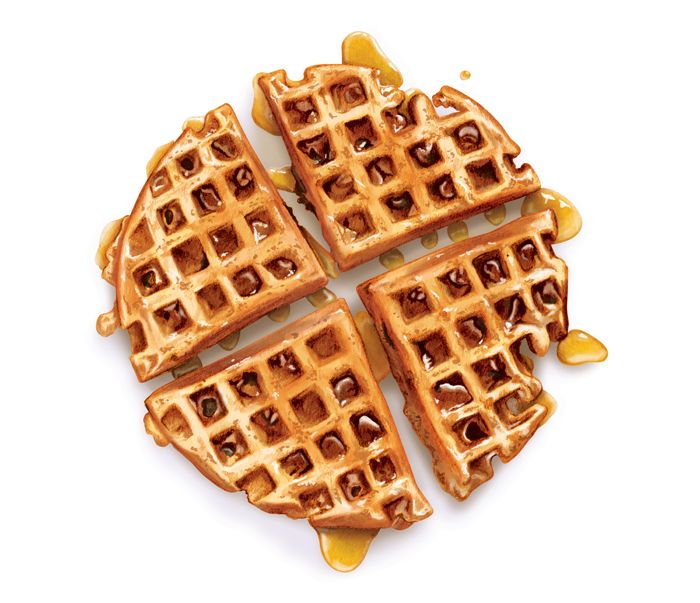
Incorporating a touch of creativity into your waffle-making can transform a simple breakfast into a delightful culinary adventure. Here are some imaginative waffle recipes to spice up your mornings:
Banana Nut Waffles: Start with classic waffle batter, fold in sliced bananas and chopped nuts of your choice (like walnuts or pecans) before pouring it onto the waffle iron. Top with a dollop of whipped cream and a drizzle of honey or maple syrup for a sweet and nutty treat.
Strawberry Shortcake Waffles: Blend fresh strawberries into your waffle batter for a burst of berry flavor. Once cooked, stack the waffles with a layer of whipped cream and fresh strawberries between each waffle, finishing with a sprinkle of powdered sugar and a dollop of whipped cream on top.
Lemon Blueberry Waffles: Mix in fresh blueberries and a squeeze of lemon juice into your batter for a zesty twist. Serve these with a drizzle of lemon glaze and a sprinkle of powdered sugar for a refreshing and fruity start to the day.
Cinnamon Roll Waffles: Add a spoonful of cinnamon roll dough to your waffle batter, or simply mix in cinnamon and sugar for a baked cinnamon roll taste without the rise. Enjoy these with a side of maple syrup or a dusting of powdered sugar.
Chocolate Chip Waffles: For a classic chocolate lover’s delight, stir in a handful of chocolate chips into your waffle batter. Once cooked, you can top them with a scoop of vanilla ice cream and a drizzle of chocolate sauce for a delectable dessert-for-breakfast.
Peanut Butter and Banana Waffles: Spread a thin layer of peanut butter on your cooked waffles, then top with sliced bananas and a drizzle of honey or maple syrup. For an extra crunch, sprinkle some crushed pretzels or crushed peanuts on top.
Mango Coconut Waffles: Blend in fresh mango and shredded coconut into your waffle batter for a tropical twist. Serve with a dollop of whipped cream and a sprinkle of toasted coconut for a summery breakfast.
Apple Cider Waffles: Infuse your waffle batter with apple cider for a warm, fall-inspired flavor. Once cooked, top with a scoop of apple butter and a sprinkle of cinnamon sugar for a cozy breakfast treat.
Cheesecake Waffles: Mix in a little cream cheese into your waffle batter for a subtle cheesecake flavor. Serve these with a drizzle of maple syrup and a dollop of whipped cream for a dessert-like breakfast.
S’mores Waffles: Melt a piece of chocolate and a marshmallow on top of a hot waffle. Once cooked, wrap it around a stick and dip it into a chocolate sauce for a campfire-inspired snack that’s perfect for any time of the year.
Remember, the beauty of waffles is their versatility. Feel free to experiment with different ingredients and flavors to find your own signature creations. Whether you’re a fan of classic flavors or looking to add a touch of whimsy to your morning routine, waffles offer a canvas for endless culinary possibilities.
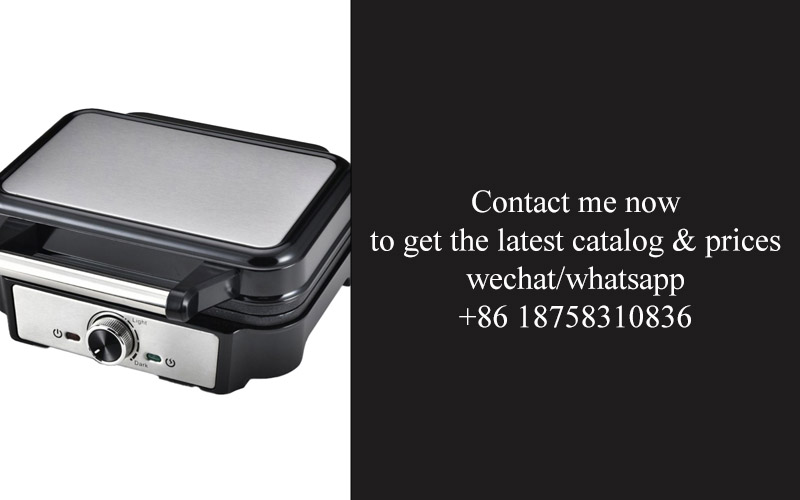
Waffle makers are a delightful addition to any kitchen, and while they’re designed to be user-friendly, proper maintenance and care can extend their lifespan and ensure they continue to produce perfect waffles. Here are some tips to keep your non-Belgian waffle maker in top condition:
Keep It Clean- After each use, it’s crucial to wipe down the waffle maker immediately to prevent any sticky residue from hardening. Use a damp cloth to remove any excess batter or grease.- For more thorough cleaning, remove the non-stick plates and wash them with warm, soapy water. Avoid using abrasive cleaners or scouring pads, as they can scratch the surface.- If the plates are removable, check the manufacturer’s instructions for specific cleaning guidelines, as some models have different recommendations.
Dry Thoroughly- Ensure the plates are completely dry before reassembling the waffle maker. Water left on the plates can lead to rust or mildew, especially if you live in a humid climate.- Use a clean towel to pat the plates dry, and consider using a hairdryer on a low setting to expedite the process, if necessary.
Avoid Overheating- While non-Belgian waffle makers are generally more forgiving than their Belgian counterparts, overheating can still be an issue. Always follow the manufacturer’s guidelines for cooking times and temperatures.- If you notice the waffle maker is getting too hot, turn it off and let it cool down before using it again. Overheating can cause the non-stick coating to break down more quickly.
Regularly Check the Non-Stick Coating- Over time, the non-stick coating on your waffle maker may start to wear down, which can lead to sticking and a shorter lifespan for the appliance.- Periodically inspect the plates for any signs of wear or damage. If you notice any changes, consider using a non-stick cooking spray to help prevent sticking.- If the coating is severely damaged, it may be time to replace the plates or the entire waffle maker.
Use the Right Batter Consistency- While non-Belgian waffle makers are versatile, using batter that’s too thick or too thin can affect performance and maintenance.- Aim for a batter that’s pourable but not runny. Too much liquid can lead to overflow and make the plates difficult to clean, while too much flour can result in a gummy waffle.
Store Properly- When not in use, store your waffle maker in a cool, dry place. Avoid placing it in direct sunlight or near heat sources, as this can affect the integrity of the materials.- If you’re storing the waffle maker for an extended period, consider placing a small amount of silica gel packets inside to absorb any excess moisture.
Handle with Care- When handling the waffle maker, especially when it’s hot, use oven mitts or a dry towel to prevent burns.- Be cautious when removing the waffles from the plates, as they can be hot and delicate.
Regularly Clean the Hinges and Latches- Over time, hinges and latches can accumulate grease and food particles, which can make opening and closing the waffle maker more difficult.- Use a damp cloth to wipe down these areas, and if necessary, apply a small amount of lubricant to ensure smooth operation.
Empty the Removable Batter Well- If your waffle maker has a removable batter well, make sure to empty it after each use to prevent any spills or leaks that could lead to damage.- Wipe the inside of the well with a damp cloth and dry it thoroughly before replacing it in the waffle maker.
Follow Manufacturer’s Instructions- Always refer to the user manual for specific maintenance and care instructions. Different models may have unique features and care requirements.- Keeping the manual handy can save you time and prevent potential damage to your waffle maker.
Remember, regular maintenance and proper care of your non-Belgian waffle maker will not only ensure it continues to perform well but will also make your waffle-making experience more enjoyable. A well-maintained waffle maker is a long-term investment in your kitchen, and with a little attention, it can provide years of delicious waffles.
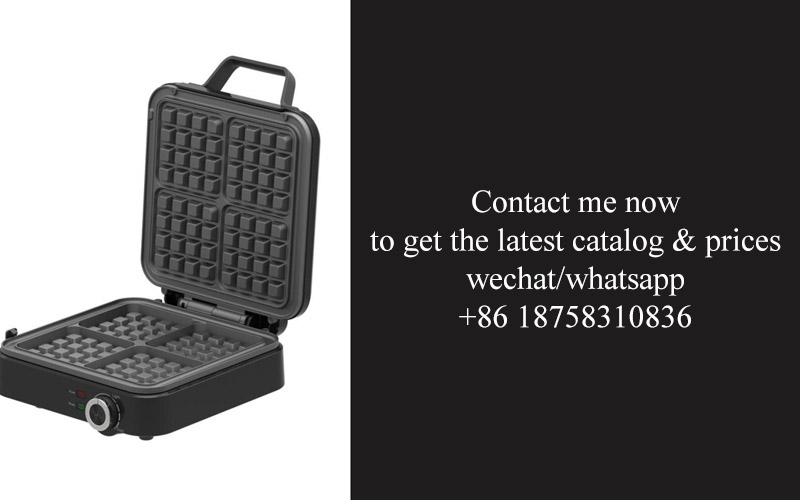
When it comes to waffle makers, there’s a distinct difference between non-Belgian and traditional Belgian models. Here’s a closer look at how they stack up against each other in various aspects.
The non-Belgian waffle maker is often more compact and versatile, designed with a variety of shapes and sizes to cater to different preferences. These machines are perfect for those who enjoy a lighter, crispier texture in their waffles. On the other hand, the Belgian waffle maker is known for its deep wells and thicker batter, resulting in a heartier, more fluffy waffle. The Belgian style is often preferred by those who love a denser, more substantial bite.
One key difference lies in the cooking surface. Non-Belgian waffle makers typically have a flat, even surface, which allows for a consistent waffle every time. The Belgian models, with their distinctive grid pattern, can sometimes lead to uneven cooking if not monitored closely. This means that the Belgian waffle might require a bit more attention to ensure it’s cooked through without burning the edges.
In terms of versatility, non-Belgian waffle makers often come with various settings and even non-waffle attachments. From pancakes to grilled sandwiches, these machines can be a one-stop shop for a variety of breakfast and brunch items. Belgian waffle makers, while primarily designed for waffles, sometimes have a dedicated sandwich feature, but they are less likely to offer the same level of versatility.
Maintenance is another area where the two types of waffle makers differ. Non-Belgian waffle makers are generally easier to clean due to their flat surfaces and fewer crevices. The Belgian waffle maker, with its intricate grid, can be a bit more of a challenge to keep clean. Food particles can easily get trapped in the grooves, so a thorough cleaning after each use is essential.
When it comes to price, non-Belgian waffle makers tend to be more budget-friendly. They offer a great value for those who want a quality waffle without the high price tag. Belgian waffle makers, while still affordable, can be a bit pricier due to their specialized design and features.
Another factor to consider is the cooking time. Non-Belgian waffle makers often cook faster, which is great for a quick breakfast or when you’re short on time. Belgian waffles, with their thicker batter and deeper wells, take a bit longer to cook, which can be a downside if you’re in a hurry.
The taste and texture of the waffles also differ. Non-Belgian waffles are usually lighter and crispier, making them ideal for those who prefer a flaky, almost cake-like texture. Belgian waffles, with their heartier texture, are more like a bread, which can be a better choice for those who enjoy a more substantial breakfast.
Finally, there’s the matter of personal preference. Some people are drawn to the unique look and texture of Belgian waffles, while others prefer the simplicity and speed of non-Belgian models. It ultimately comes down to what you value most in your waffles and how you plan to use your waffle maker.
In conclusion, both non-Belgian and traditional Belgian waffle makers have their own set of advantages and disadvantages. The choice between the two depends on your personal preferences, cooking habits, and what you’re looking for in a waffle maker. Whether you prefer a lighter, crispier waffle or a denser, heartier one, there’s a waffle maker out there that can satisfy your cravings.
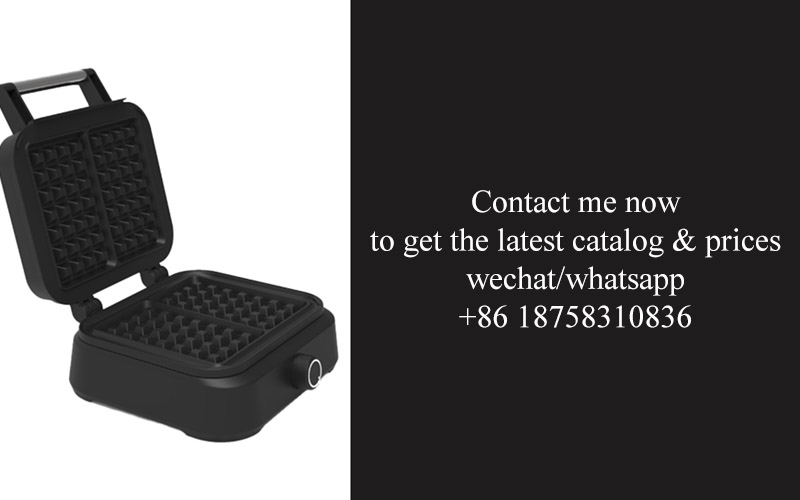
When considering a waffle maker for your kitchen, it’s essential to think about how it will fit into your daily routine and what you’re looking for in a waffle. Non-Belgian waffle makers offer a variety of options that cater to different tastes and preferences. Here are a few key aspects to consider when choosing a non-Belgian waffle maker:
Size and Shape: Non-Belgian waffle makers come in various sizes, from the classic square shape to rectangular, oval, and even heart-shaped. Consider how much space you have in your kitchen and what shape you prefer for your waffles.
Waffle Pattern: The pattern on your waffle is more than just aesthetics; it can affect the texture and the way the waffle holds toppings. Some non-Belgian waffle makers have intricate patterns, while others are simpler and more uniform.
Cooking Surface: The non-stick coating on the cooking surface is crucial for easy release and clean-up. Some models have a thicker coating, which may last longer, while others might require more frequent maintenance.
Adjustable Temperature: Being able to control the temperature can be a game-changer. It allows you to achieve the perfect waffle, whether you prefer a crispy exterior or a soft, chewy texture.
Non-Belgian Features: These can include features like a removable drip tray for easy cleanup, a digital display for precise temperature control, and even features like a rotating platen to ensure even cooking.
Ease of Use: Look for a waffle maker with a simple interface, such as a single button to start the cooking process. Some models have additional features like a programmable timer or an automatic shut-off for safety.
Capacity: If you’re planning to serve multiple people, consider a waffle maker with a larger capacity. Some models can cook two or even four waffles at once, which is perfect for a family gathering or a casual get-together.
Material: The build quality is important. Non-Belgian waffle makers are often made from durable materials like stainless steel or aluminum, which can withstand high temperatures and are easy to clean.
Price: Finally, consider your budget. Non-Belgian waffle makers range in price from budget-friendly options to high-end models with all the bells and whistles. Decide what features are must-haves and what you can live without to find the best waffle maker for your needs.
When it comes to popular brands and models of non-Belgian waffle makers, several stand out for their quality, versatility, and user satisfaction:
Cuisinart: Known for their durable appliances, Cuisinart offers a range of non-Belgian waffle makers, including the Cuisinart Classic Round Belgian Waffle Maker and the Cuisinart Waffle Maker with Removable Plates.
Hamilton Beach: Hamilton Beach has a variety of waffle makers, such as the Hamilton Beach Flip Belgian Waffle Maker and the Hamilton Beach Classic Waffle Maker, which are praised for their ease of use and even cooking.
Black & Decker: Black & Decker provides affordable options that don’t compromise on quality, like the Black & Decker Belgian Waffle Maker and the Black & Decker Classic Waffle Maker.
Krups: A well-known brand in kitchen appliances, Krups offers stylish and functional waffle makers, including the Krups Belgian Waffle Maker and the Krups Waffle Maker with a Non-Stick Coating.
Belkin: Known for their innovative designs, Belkin offers a unique waffle maker with a rotating platen, like the Belkin Mini Waffle Maker, which is perfect for smaller waffles and easy flipping.
Using your non-Belgian waffle maker is a straightforward process, but there are a few tips to ensure the best results:
Preheat the Waffle Maker: Most non-Belgian waffle makers come with a preheat function. Use this feature to ensure that your waffle maker is at the right temperature for even cooking.
Prepare the Batter: Follow your waffle recipe or mix up a simple batter with flour, eggs, milk, and a bit of sugar and vanilla extract. The batter should be thin and pourable to ensure it cooks evenly.
Grease the Plates: While not all non-Belgian waffle makers require greasing, it’s a good idea to lightly coat the plates with non-stick cooking spray to prevent sticking.
Pour the Batter: Use a ladle to pour the batter onto the preheated waffle maker, spreading it evenly across the surface. Be careful not to overfill, as this can cause the batter to overflow and create a mess.
Cook Time: The cooking time can vary depending on the model and your desired waffle texture. Check the manufacturer’s instructions for the recommended cooking time, which is usually between 3 to 5 minutes.
Check for Doneness: Once the waffle is done, the edges will be golden brown and crispy. If the center is still wet, give it a little more time.
Remove the Waffle: Use a spatula to carefully lift the waffle off the plate. If it’s sticking, you may need to let it cool for a minute or two before you can remove it.
Creative waffle recipes can take your breakfast from ordinary to extraordinary. Here are a few ideas to get you started:
Classic Belgian Waffle: Use your non-Belgian waffle maker to make classic Belgian waffles with a rich vanilla flavor and a golden, crispy exterior.
Butternut Squash Waffles: Mix pureed butternut squash into your batter for a nutritious and flavorful twist on the traditional waffle.
Blueberry Waffles: Toss fresh blueberries into your batter for a burst of sweetness and a pop of color.
Peanut Butter and Banana Waffles: Spread peanut butter on one half of a waffle and top with sliced bananas for a delicious breakfast sandwich.
Banana Nut Waffles: Stir in chopped nuts like walnuts or pecans into your batter for a crunchy, nutty flavor.
Choc chip Waffles: Add chocolate chips to your batter for a sweet treat that’s perfect with a drizzle of maple syrup.
Pumpkin Spice Waffles: Mix in pumpkin puree and pumpkin spice for a seasonal twist on the classic waffle.
When it comes to maintaining and caring for your non-Belgian waffle maker, a few simple steps can keep it in great condition for years to come:
Unplug Before Cleaning: Always unplug your waffle maker before cleaning it to avoid any accidents.
Wipe Down After Each Use: Wipe down the outside of the waffle maker with a damp cloth to remove any spills or crumbs.
Remove the Plates: If your waffle maker has removable plates, take them out and wash them in warm, soapy water. Be sure to dry them thoroughly before replacing them.
Scrub Stubborn Stains: If you notice any stubborn stains on the plates, use a non-abrasive scrubber to gently remove them.
Check the Drip Tray: If your waffle maker has a drip tray, remove it and wash it with soap and water. Be sure to dry it completely before replacing it.
Avoid Using Harsh Chemicals: Do not use harsh chemicals or abrasive cleaners on your waffle maker, as they can damage the non-stick coating or the exterior.
Store Properly: When not in use, store your waffle maker in a cool, dry place. Avoid placing it in direct sunlight or near heat sources.
When comparing non-Belgian waffle makers to traditional Belgian waffle makers, there are several factors to consider:
Size: Non-Belgian waffle makers are typically smaller and more compact, making them easier to store. Traditional Belgian waffle makers are larger and can be more cumbersome to store, but they often produce waffles with a distinct shape and texture.
Cooking Time: Non-Belgian waffle makers usually cook faster than traditional Belgian waffle makers. This can be a significant advantage if you’re short on time in the morning.
Ease of Use: Non-Belgian waffle makers are often simpler to use, with fewer buttons and settings. Traditional Belgian waffle makers may have more features, which can make them more complicated for some users.
Price: Non-Belgian waffle makers tend to be more affordable than traditional Belgian waffle makers, which can be a deciding factor for budget-conscious consumers.
Taste and Texture: While both types of waffle makers can produce delicious waffles, traditional Belgian waffles are known for their larger, fluffier pockets, which can hold more toppings. Non-Belgian waffles are often thinner and have a more even texture.
In the end, the perfect addition to your kitchen depends on your personal preferences and lifestyle. If you’re looking for a quick and easy way to make waffles, a non-Belgian waffle maker might be the way to go. However, if you’re a fan of the classic Belgian waffle’s shape and texture, or if you enjoy experimenting with different waffle recipes, a traditional Belgian waffle maker could be the ideal choice. Whichever you choose, both types of waffle makers can add a delightful touch to your breakfast routine.